I tried out the following example. This should show image processing results.
from scipy import ndimage as ndi
import matplotlib.pyplot as plt
from scipy import misc
import numpy as np
import cv2
from skimage.morphology import watershed, disk
from skimage import data
from skimage.filters import rank
from skimage.util import img_as_ubyte
from skimage import io; io.use_plugin('matplotlib')
image = img_as_ubyte('imagepath.jpg')
# denoise image
denoised = rank.median(image, disk(2))
# find continuous region (low gradient -
# where less than 10 for this image) --> markers
# disk(5) is used here to get a more smooth image
markers = rank.gradient(denoised, disk(5)) < 10
markers = ndi.label(markers)[0]
# local gradient (disk(2) is used to keep edges thin)
gradient = rank.gradient(denoised, disk(2))
# process the watershed
labels = watershed(gradient, markers)
# display results
fig, axes = plt.subplots(nrows=2, ncols=2, figsize=(8, 8),
sharex=True, sharey=True)
ax = axes.ravel()
ax[0].imshow(image, cmap=plt.cm.gray, interpolation='nearest')
ax[0].set_title("Original")
ax[1].imshow(gradient, cmap=plt.cm.nipy_spectral, interpolation='nearest')
ax[1].set_title("Local Gradient")
ax[2].imshow(markers, cmap=plt.cm.nipy_spectral, interpolation='nearest')
ax[2].set_title("Markers")
ax[3].imshow(image, cmap=plt.cm.gray, interpolation='nearest')
ax[3].imshow(labels, cmap=plt.cm.nipy_spectral, interpolation='nearest', alpha=.7)
ax[3].set_title("Segmented")
for a in ax:
a.axis('off')
fig.tight_layout()
plt.show()
I get the follofing error.
Traceback (most recent call last):
File "/home/workspace/calculate_watershed.py", line 15, in <module>
image = img_as_ubyte('koralle0.jpg')
File "/home/workspace/venv/lib/python3.5/site-packages/skimage/util/dtype.py", line 409, in img_as_ubyte
return convert(image, np.uint8, force_copy)
File "/home/workspace/venv/lib/python3.5/site-packages/skimage/util/dtype.py", line 113, in convert
.format(dtypeobj_in, dtypeobj_out))
ValueError: Can not convert from <U12 to uint8.
The path to the image is a valued one. Do You have any idea how to solve this problem? Thanks in advance
